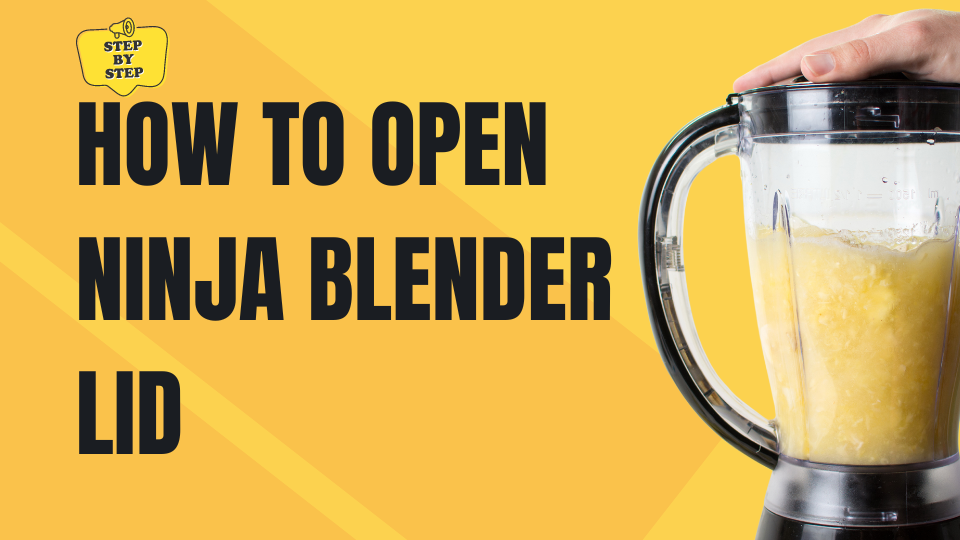· Robert Myers · tutorials · 10 min read
What Are Different Blender Blades Used For? Your Key to Better Cooking
Explore the versatility of blender blades - from smoothies and purees to grinding spices and crushing ice, enhancing culinary creativity and efficiency.
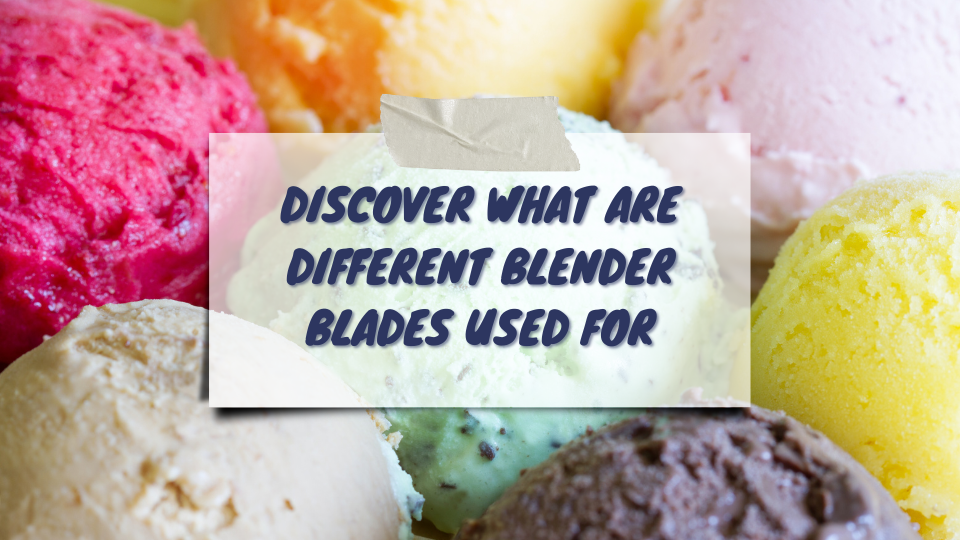
Table of Contents
- Key Takeaways
- The Anatomy of a Blender: A Closer Look at Blades
- Understanding What Are Different Blender Blades Used For
- How to Choose the Right Blender Blade
- Maintenance and Safety Precautions for Blender Blades
- Professional Tips for Optimizing Blender Use
- Conclusion
As a lifelong home cook and food enthusiast, I’ve found that understanding the tools of my trade is as important as mastering the recipes themselves. And one such tool that stands out is the blender - more specifically, its blades. You might be wondering, what are different blender blades used for?
Well, believe it or not, not all blender blades are created equal. Different types of blender blades have unique uses that can significantly affect the texture and quality of your food or drink. This understanding is crucial not just for us home cooks, but also for fitness and health enthusiasts who rely on blenders for their daily smoothies or protein shakes. And let’s not forget professional chefs and culinary students for whom blenders and their components are essential tools in their culinary endeavors.
Whether you’re whipping up a delicious puree, a refreshing smoothie, or grinding some fresh spices, the right blender blade can make a world of difference. So join me as we take a deep dive into the fascinating world of blender blades, their types, and their uses. This basic understanding is key to maximizing the functionality of your blender and transforming your culinary creations.
So, let’s roll up our sleeves and discover what the world of blender blades has to offer. Get ready to learn, apply, and enjoy the delicious fruits of your labor!
Key Takeaways
🍴Blender blades come in different types each designed for specific tasks, including liquefying fruits and veggies for smoothies, creating purees and sauces, grinding dry ingredients, and crushing ice for frozen drinks.
🎯Your specific needs and cooking habits should guide you in picking the right blender blade. Make comparisons and choose high-quality, durable blades for better blender performance.
🧹Regular cleaning and proper maintenance of blender blades prolong their effectiveness and lifespan. Safety during handling and appropriate replacement when necessary are also crucial.
✨Professional tips for optimizing blender use include using cooking techniques with specific blades, enhancing efficiency by understanding blade use, and appreciating the role of blender blades in professional kitchens.
🍽️Understanding the different functionalities of blender blades and applying this knowledge in cooking can significantly enhance culinary efficiency, effectiveness, and creativity.
The Anatomy of a Blender: A Closer Look at Blades
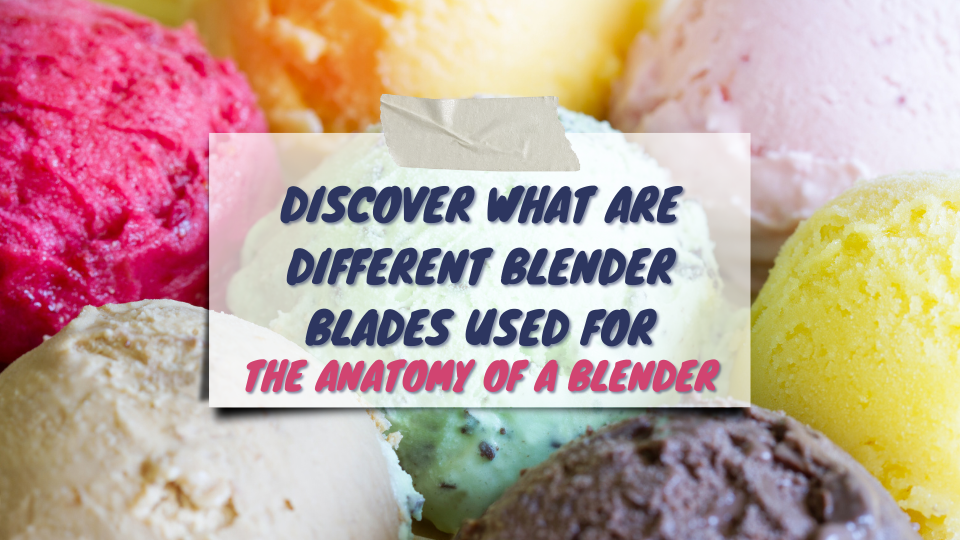
As someone deeply immersed in the culinary world, I’ve learned that understanding your tools can greatly enhance your cooking experience. In the realm of blenders, knowing the ins and outs of the blade design and functionality is a game-changer.
General Components of a Blender
At the surface, a blender may appear simple with its motor, jar, and blade. However, each component plays a vital role, with the blade being the key player. It’s the reason why it’s important to know what different blender blades are used for as it can revolutionize the way you use this appliance.
Different Types of Blender Blades and Their Design Features
A variety of blender blades exist, each with unique design features tailored to perform specific tasks. Some blades have sharp edges meant for chopping ingredients, while others have flat and blunt edges, making them perfect for crushing ice. These design features greatly impact the texture and consistency of your blends, reinforcing the importance of understanding the blades’ roles.
The Role of Blender Blades in Food Processing
The blender blade is the powerhouse of your appliance. It takes on tasks from blending fruits for smoothies to pureeing ingredients for a gourmet soup, and even grinding grains or crushing ice. For home cooks like me, the knowledge of these blade roles can elevate our culinary creations. Fitness and health enthusiasts can benefit too, as the right blade can ensure their health drinks are smooth and well-blended. As for professional chefs and culinary students, understanding the anatomy of a blender, especially the blades, is fundamental to mastering the art of food preparation.
In conclusion, the blade is the heart of your blender. By understanding its design and functions, we can maximize the use of this versatile kitchen gadget. So next time you use your blender, remember, the blade does the magic!
Read The 6 Best Blendtec Blenders 2023 – Top Model Reviews
Understanding What Are Different Blender Blades Used For
When you ask, “what are different blender blades used for?”, you are diving into a world of culinary versatility that blenders offer us. There’s much more to these kitchen appliances than just smooth blending.
Blender Blades for Smoothies and Health Drinks
As a fitness enthusiast myself, I rely on my blender daily to prepare my post-workout protein shakes or nutrient-rich green smoothies. The blades designed for these tasks are usually sharp and flat. They work efficiently to liquefy fruits, vegetables, and even nuts, providing a smooth, pulp-free drink.
Blades for Culinary Recipes: Purees, Soups, Sauces, etc.
My fellow home cooks and culinary enthusiasts, I know you appreciate the magic that blenders bring to our cooking adventures. Blender blades designed for culinary recipes are adept at creating smooth purees, creamy soups, and velvety sauces. These blades tend to have a unique curve, which creates a vortex for better blending of ingredients.
Blades for Grinding and Milling: Nuts, Grains, Spices, etc.
Have you ever tried grinding nuts, grains, or spices without a grinder? Frustrating, right? That’s when a blender equipped with the right blade type comes in handy. These blades are typically stout and blunt, capable of turning your hard ingredients into fine powders or pastes.
Blender Blades for Ice Crushing and Frozen Foods
Imagine preparing your favorite frozen margarita or slush without a blender that can crush ice effectively. Impossible, right? That’s where blender blades specifically designed for ice crushing and frozen foods come into the picture. They are typically heavy-duty blades that can withstand the hardness of ice and frozen fruits, giving you that perfect blend of icy beverages.
As you can see, each blade has its purpose and specialization. Choosing the right blade for the right task can significantly enhance the efficiency of your blender and elevate your cooking experience. And remember, no matter which blade you’re using, always handle them with care for safety and long-lasting use.
How to Choose the Right Blender Blade
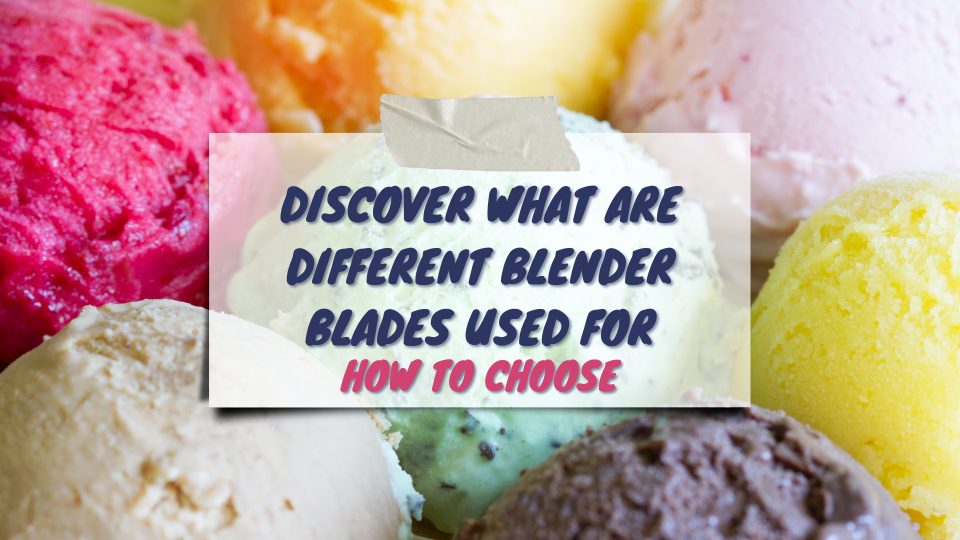
As a regular blender user, I can confidently say that understanding what different blender blades are used for can significantly transform your blending experience.
Considering Your Needs and Cooking Habits
Are you a smoothie lover, an ardent home baker, or a professional chef with a need for the finest purees? Your needs dictate the blade you should opt for. As a fitness enthusiast, a blade that effortlessly liquefies fruits and veggies for my smoothies is a must-have. On the contrary, a home baker might prioritize a blade that can easily mix and blend dough.
Comparison Between Different Blender Blade Models
Now that you’ve identified your needs, comparing different blender blade models can guide you to the perfect match. From my experience, blender blades for protein shakes and smoothies may not be the best for grinding dry ingredients. Therefore, ensure you read up on various models and perhaps even consult customer reviews before deciding.
The Impact of Blender Blade Quality on Performance
Lastly, remember that blender blade quality directly influences your blender’s performance. A high-quality, durable blade can handle a variety of ingredients and produce finer blends, significantly improving your blending experience. I have learned this the hard way, with a poor-quality blade leaving chunks in my supposedly smooth shakes!
In summary, choosing the right blender blade relies heavily on understanding your needs, comparing different models, and assessing the blade quality. Remember, a blender is more than just a kitchen appliance. It’s a tool that brings your culinary creativity to life.
Maintenance and Safety Precautions for Blender Blades
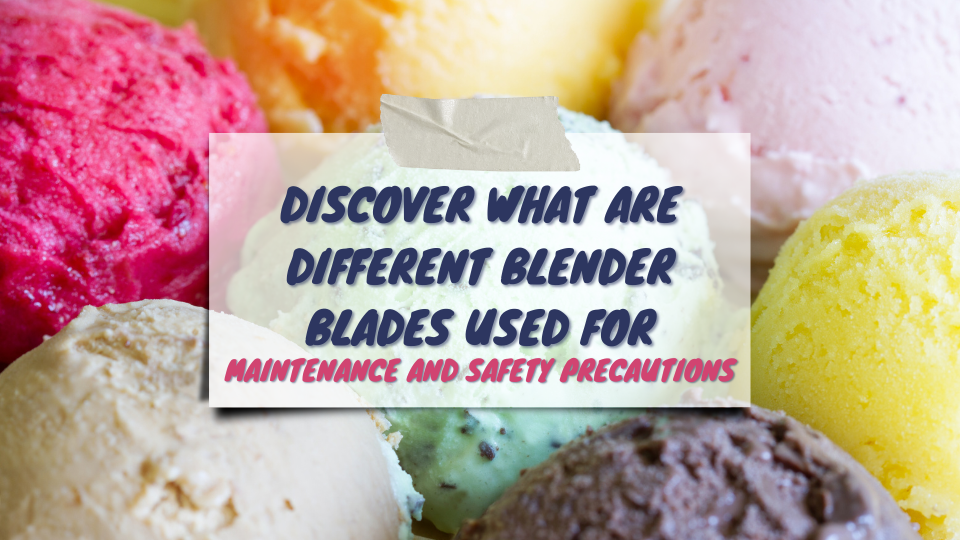
Taking care of your blender isn’t just about using it properly; it’s also about maintaining it. A significant part of this process involves understanding how to clean and care for your blender blades.
Best Practices for Cleaning and Maintaining Blender Blades
Blender blade maintenance is essential for preserving the effectiveness and lifespan of your appliance. After each use, it’s important to clean the blades thoroughly to prevent food residue from hardening and causing damage. Always disconnect the blender before cleaning and use a soft brush to reach into the crevices. For a deeper clean, you can detach the blades if your model allows and soak them in warm soapy water.
Safety Precautions When Handling and Using Blender Blades
Blender blades are sharp and can cause injury if not handled correctly. Always unplug the blender before removing or cleaning the blades. Use protective gloves when handling the blades directly and never put your hands inside the blender jug while it’s connected to power.
When and How to Replace Blender Blades
Blender blades don’t last forever and will eventually need to be replaced. If you notice your blender isn’t working as efficiently or if the blades appear dull or damaged, it might be time for a replacement. You can typically order replacement blades directly from the manufacturer, and many blender models are designed for easy user blade replacement. However, always consult your blender’s user manual for specific instructions.
Remember, when it comes to what different blender blades are used for, a well-maintained and safe-to-use blender is a key part of ensuring optimal performance and results.
Professional Tips for Optimizing Blender Use
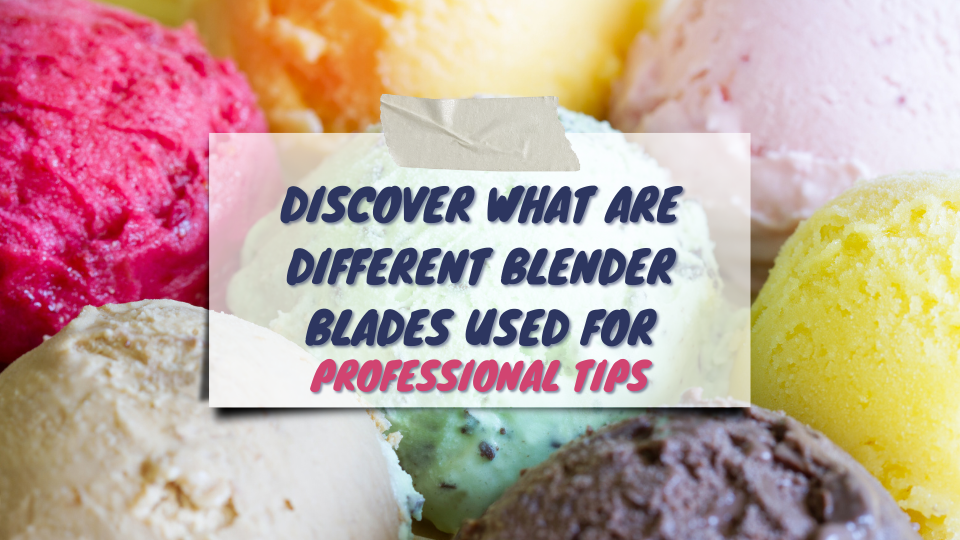
As a seasoned home cook and health enthusiast, I’ve always been intrigued by the question: what are different blender blades used for? I discovered that understanding blender blade functions can greatly enhance my culinary exploits and even my health routine. Here, I’d like to share a few of my insights with you.
Cooking Techniques with Blender Blades
Cooking techniques with blender blades can vary wildly, making them incredibly versatile tools in the kitchen. For example, the standard four-point blade is excellent for pureeing and blending soups. However, if you’re looking to crush ice or nuts, a two-point blade might be more effective. I remember the first time I switched blades for making a smoothie - it was a game-changer!
Enhancing Efficiency with Blender Blade Use
Understanding how to use blender blades effectively can help enhance your cooking efficiency. Always remember to cut your ingredients into even sizes and add liquid first for better blending. And if you’re making a green smoothie, blend your greens and liquid first before adding other ingredients for a smoother consistency. It’s tips like these that have revolutionized my blender use.
The Role of Blender Blades in Professional Kitchens
In professional kitchens, blender blades play a critical role. They help in everything from grinding spices to blending sauces, and even making dough. When I interned at a local restaurant, I was surprised by the variety of tasks a blender could perform with the right blades. It was a key lesson in professional tips for blender use.
Conclusion
Reflecting on our exploration of what different blender blades are used for, we’ve covered quite a range of uses. From home cooks to fitness enthusiasts and even professional chefs, we all can benefit from understanding our blender better. I’ve personally found that different blades can lead to different results, ultimately enhancing my culinary creations.
The diversity in blender blades allows us to make the most out of our recipes. As a home cook, knowing the right blade to use for each ingredient enhances the efficiency and effectiveness of my cooking. As a fitness enthusiast, the right blender blade can make a world of difference in preparing my health drinks. And as an aspiring chef, understanding the tools of my trade, including blenders, is fundamental to achieving optimal food presentation.
In summary, the usage of blender blades extends far beyond simple blending. They are instrumental in exploring new recipes, ensuring the nutritional value of our drinks, and refining our culinary skills. The key is to understand the functionalities of different blades and use them appropriately. With this knowledge, our blenders can truly be one of the most versatile tools in our kitchens.




